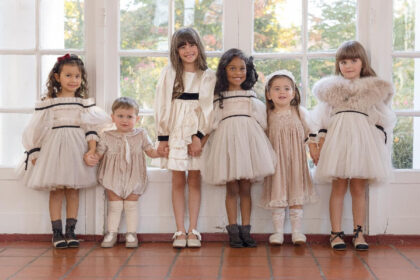-Deva Narayan
Man has always differed from animals in many ways, ranging from ingenious inventions to being able to understand the nature of their existence. A primary difference that is observed universally and in daily life is the presence of clothing or an exterior layer of material to keep humanity comfortable in harsher areas. The concept of clothing is unique to humanity, as well as concepts themselves. Clothing has evolved from a simple bit of fur from a wild animal to diverse pieces of colourful sheets made from many elements.
India is a diverse country, in population as well as environment. There are almost every type of biome scattered across the ranges of this beautiful nation and humanity has improvised to adapt to these lands in many ways. Clothing has been integral to the survival of man in most of these regions. Over time, as civilization expanded, styles of clothing also started to differ from region to region. In India, the two general styles of clothing are categorized as the North Indian style and the South Indian style. Many other styles are also present and have even gained tremendous popularity, such as the influence of Western styles of clothing. In this article, the attire of men shall be discussed.
North Indian styles of clothing are very diverse as there is a greater range of environments than in South India. As such, many styles of clothing can be observed. The most common, however, is the Sherwani. The Sherwani is a long coat-like garment that is typically worn over a kurta (a long tunic) and paired with churidar pants (fitted trousers) or dhoti (a traditional draped garment). It is often crafted from luxurious fabrics such as silk or velvet and adorned with intricate embroidery and beadwork. The Sherwani is commonly worn on special occasions and formal events such as weddings, festivals, and cultural celebrations. It exudes an aura of elegance, sophistication, and regality, making it a quintessential part of North Indian men’s traditional attire.
The Kurta Pyjama is a classic ensemble consisting of a knee-length kurta (tunic) paired with either loose-fitting trousers (pajama) or churidar pants (fitted trousers). This attire is commonly worn for both casual and semi-formal occasions. Kurtas are often made from comfortable fabrics like cotton or silk and can be adorned with simple designs or intricate embroidery, depending on the occasion. Other famous north Indian pieces of clothing are items such as the Nehru Jacket and the Turban.
Named after India’s first Prime Minister, Jawaharlal Nehru, the Nehru Jacket is a sleeveless coat with a Mandarin collar. It is typically worn over a kurta or shirt and adds a touch of sophistication to any outfit. Nehru Jackets come in various fabrics, including silk, cotton, and wool, and can be embellished with embroidery or decorative buttons.The Safa, or turban, is a traditional headwear worn by men in North India, especially in states like Punjab, Rajasthan, and Uttar Pradesh. Safas come in various colors and fabrics, with each color and style carrying its cultural significance.

South Indian clothing is comparatively more linear, as the same type of clothing is used in most areas, with only minor changes. The difference between them lies in their draping style. Dhoti, Mundu, and Veshti are used to refer to the same piece of clothing, a long piece of unstitched garment, usually cotton or silk. All 3 are draped differently leading to some variation. One of the most important influences caused by Western culture is the integration of the shirt into South Indian clothing. It has become an integral part of many styles and is now inseparable from South India. In addition to traditional attire, many men in South India also wear Western-style shirts paired with a lungi. The lungi is a traditional garment similar to a sarong and is worn wrapped around the waist. It is typically made of cotton and comes in various colors and patterns. The shirt and lungi combination is a popular choice for everyday wear and casual occasions.
Over time, many pieces of Western attire have also become massively popular within India, such as shirts, t-shirts, pants, and jeans. It is possible to see these types of clothing very frequently in today’s age, in some areas, even more frequently than traditional Indian styles of clothing. Bermuda shorts have gained tremendous popularity due to their cool nature and ease of use. They are highly practical for these tropical areas and allow flexible movement. Tshirt’s also gained popularity for this reason and are now worn everywhere in the country. Another piece of Western clothing that is slowly making waves within India is the Biker jacket, as it is practical for utility and is well-adjusted for colder parts of the country. It is also gaining fast traction with the biker community of India.
In time, all these styles of clothing will likely influence each other, and brand new styles of clothing entirely will be born, one that is fashionable and practical. The environment of India is harsh to man and innovation is always necessary to stay ahead. As with the combination of the shirt and lungi, many other combinations will arise and the fashion industry will therefore always be in great business.
Please note that the opinions and perspectives expressed in this article are those of the author alone and do not necessarily represent the views or positions of the edu news team.




